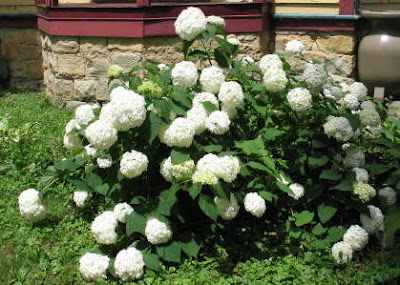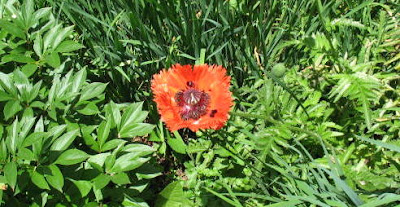Nine out of the first ten months of 2016 have witnessed above normal temperatures. And, with two highs in the seventies, November seems to be traveling down the same path. The city's average first frost date is October 24, but we whizzed right by that date and well may make it past mid-November without a freeze.
This photo was taken on November 6 and you can see how this tree's leaves have begun to litter the park lawn.
Beverly's tree cover makes it a delight to live in. But once a year our trees can be a real chore. We are almost buried alive in dead leaves. Most people still rake and bag their leaves, and it is nothing to see a house with 40+ leaf bags stacked near the city cans.
Not my house. I blow the leaves in my beds onto the lawn and then run over them with a mulching mower. I blow part of the shredded remains back into the beds to use as a winter mulch. The rest is left to decompose and fertilize the lawn. No raking; no bagging; and no trips to the city landfill.
We picked and ate the last of our tomatoes, peppers and green beans over Halloween weekend. I am hoping we will get one more crop from our snow peas. Meanwhile, we have lots of leafy vegetables to keep us going.
Shown in front are our collards and kale, with Swiss chard peeking up in back. Broccoli is in the upper right corner. Parsley is hiding in yet another row. All of these plants will continue to feed us until the first hard frost, which now looks like it will not arrive until after Thanksgiving. Mother Nature has been kind to us this fall.




















































